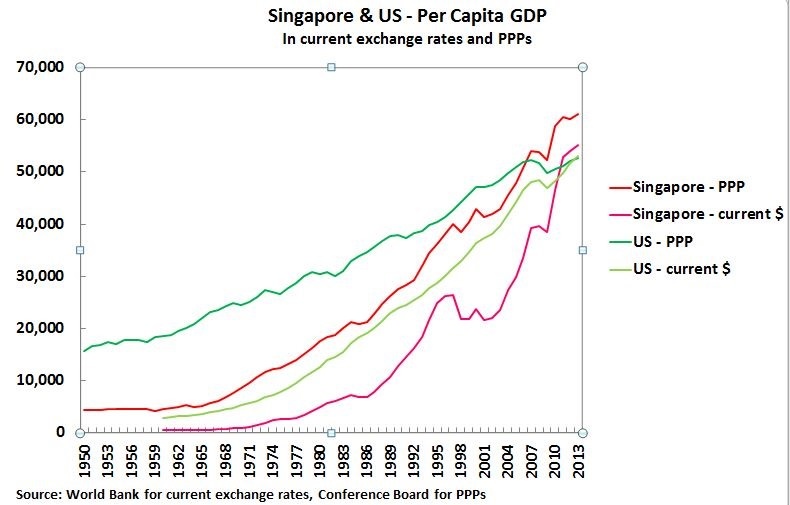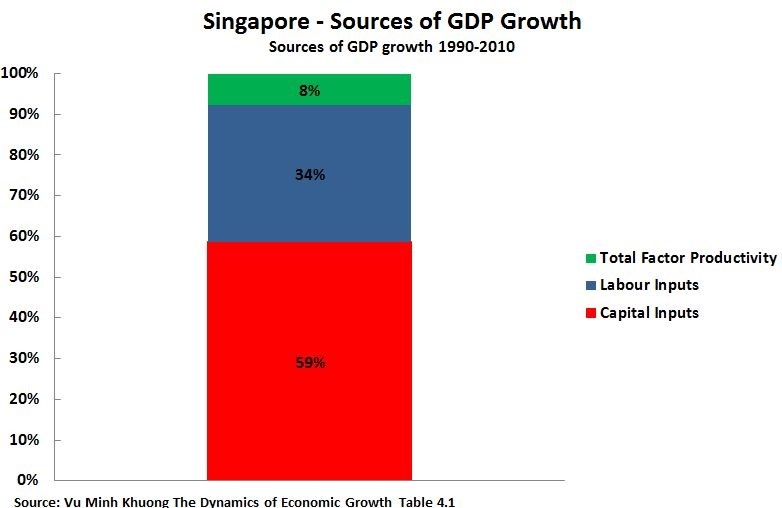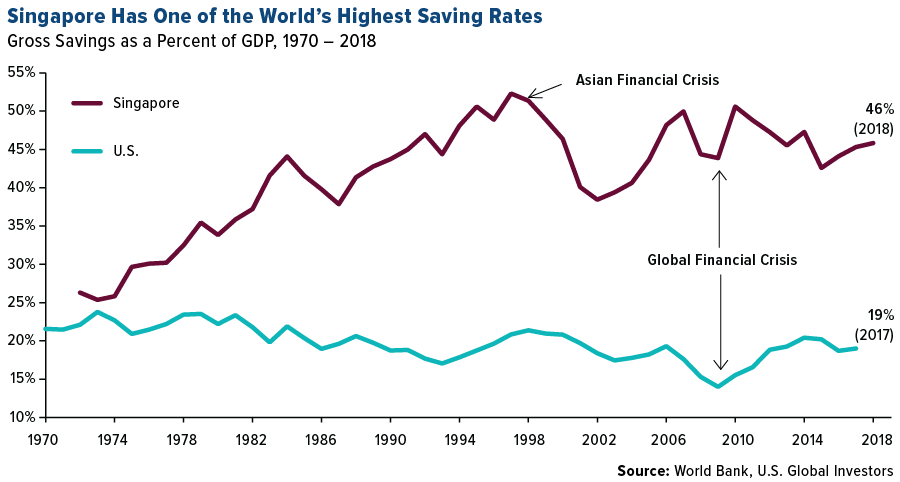Singapore is a tiny country compared to the U.S. While the U.S. has a population of over 318 million, Singapore’s population is just 5.5 million.In terms of land sizes, the two countries are not even comparable since Singapore is a city state where one can travel from one end to the other in just half hour by car.
The GDP of Singapore was $307.0 Billion in 2014. The U.S. is one of the largest economies in the world with a GDP in excess of $17.0 Trillion in 2014. The GDP per capita figure is interesting to compare between the two countries. The U.S. GDP per capita was only $54,800 while the figure for Singapore was $81,300 in 2014.
According to an article by John Ross of Renmin University of China, Singapore’s GDP per capita in 2013 was 104% of that the U.S. calculated at current exchange rates.
The chart below shows the comparison of GDP per capita between the U.S.:
Click to enlarge
The author quoted a couple of research papers noting that the economic growth of Singapore came not from productivity but from investment and labor capital accumulation.
From the article:
Singapore was a classic example of the success of an “open economy:” Singapore’s total trade is indeed considerably higher than its GDP. This is, of course, in line with the ideas behind China’s “opening up” policy. But every study shows that Singapore’s domestic development was based overwhelmingly on the huge accumulation of capital and labor, with only a tiny contribution coming from productivity growth (technically known as Total Factor Productivity, or TFP).
This reality was first noted in the 1990s by the United Kingdom-based economist Alwyn Young. His finding was used by U.S. economist Paul Krugman in a famous 1994 paper entitled “The Myth of Asia’s Miracle” to predict Asia’s coming economic failure. Krugman argued that successful economic growth should be based on productivity development, not on accumulation of capital and labor. But, of course, it was Krugman who was proved wrong as Singapore’s per capita GDP overtook even that of the U.S.
Young’s finding has since been replicated by every major study of Singapore since. The latest, by Vu Minh Khuong of the Lee Kuan Yew School of Public Policy at the National University of Singapore, is summarized in Figure 2 below. This study found that 59 percent of Singapore’s economic growth came from capital investment, 34 percent from growth of labor inputs, and only 8 percent from productivity (TFP) increases.
In short, every study has found that Singapore’s achievement of the highest level of economic development in Asia – a higher level of per capita GDP than the U.S. – was based on massive accumulation first of capital and then of labor, with productivity growth playing a tiny, almost non-existent, role.
The contribution of productivity to economic growth is much higher in the U.S. and other developed countries. So Mr.Ross concluded that basically Singapore’s economic growth is based on quantity rather than quality.
Sources:
How Singapore achieved a higher per capita GDP than the US, John Ross, Renmin University of China
The World Factbook, CIA




